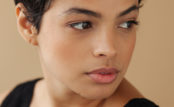Why am I losing my hair?
There are several reasons why men lose hair. Stress, some medications, illnesses and diet can all trigger hair loss in men.
That said, the overwhelming majority of men who lose their hair do so because it’s in their genes. Specifically it’s a form of testosterone, dihydrotestosterone, or DHT, that initiates follicle miniaturization, in which DHT shrinks hair follicles in vulnerable areas. During follicle miniaturization, hair becomes brittle and thin. The scalp becomes visible, and eventually without hair. When the follicles are dead, baldness occurs.
Follicle miniaturization is more widely known as androgenetic alopecia, or male pattern baldness.
Is hair loss common in men?
Very. Some estimates put male hair loss at two-thirds of men by 35 and 85% at age 50. Androgenetic alopecia is the main culprit in hair loss in over 95% of men.
What are my options for hair loss treatment?
There are several. Hair transplants are an improving field, in which a team of surgeons transplants hair grafts from above the neck to affected areas in a surgical procedure.
There are also hair loss creams and pills, of varying quality and safety, the basis of which are the subject of this article.
What is Rogaine?
Minoxidil, or Rogaine, is an over-the-counter hair loss cream. Rogaine was initially marketed in the late 1990’s to preserve existing hair in men prone to hair loss. While the mechanism by which Rogaine grows hair isn’t fully understood, Rogaine is believed to widen blood vessels and encourage oxygen, blood and nutrients into the follicles. Note that Rogaine is tested primarily in younger men, aged 18-41.
What is Propecia?
Finasteride, or Propecia, is another option. Propecia is a prescription hair loss pill. Unlike Rogaine, Propecia addresses the main cause of hair loss in men, excessive DHT, and appears to be an effective method to treat hair loss of the hair line and crown areas.
Are hair loss creams and pills safe?
Not entirely. Rogaine, while generally effective for preserving hair, comes with side effects and may produce eye irritations, including itching and redness. Rogaine may trigger allergic reactions, like a rash, tightness in the chest, chest pain, dizziness, and among other things, weight gain.
Propecia comes with a variety of side effects as well, and is particularly toxic to sexual health. Side effects of Propecia may include impotence, abnormal ejaculation, erectile dysfunction and gynecomastia (male breasts). In some cases, the side effects of Propecia are permanent, even after discontinued use.
Should I buy a hair loss cream or a pill?
That depends on your age, physiology, severity of hair loss and your health. If you’re young, in good health and just beginning to see hair loss, a cream would be a good option, as they can minimize future hair loss.
If you’re over 40 and have advanced hair loss, you might try a hair loss pill, like Propecia. But be mindful of the side effects of Propecia, note any adverse symptoms and always speak with your doctor about any concerns.
In addition, keep in mind that while Rogaine and Propecia are among the most prolific hair loss pills and creams, there are other options. Profollica, for example, is an emerging hair loss cream that comes with no reported side effects.




